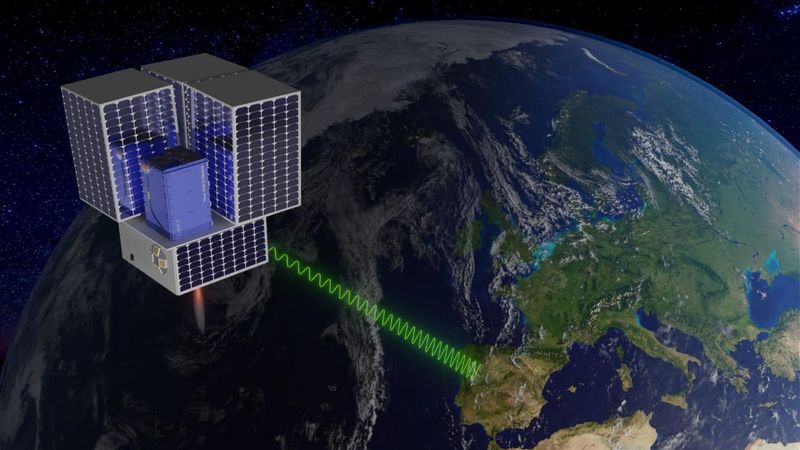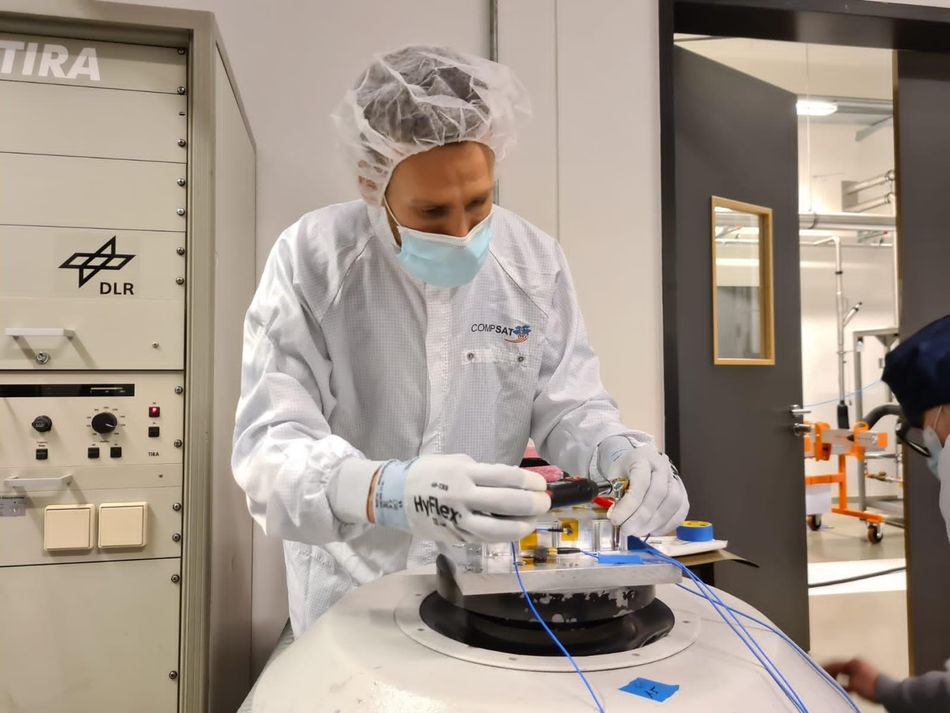The future of small satellite transfer orbits
The German Aerospace Center (Deutsches Zentrum für Luft- und Raumfahrt; DLR) is currently working with UARX Space to develop a specialised spacecraft that will transport multiple satellites to different desired orbits after separation from the launch vehicle.

The OSSIE spacecraft from UARX Space featuring DLR radio technology. Credit: DLR (CC BY-NC-ND 3.0)
The German Aerospace Center (Deutsches Zentrum für Luft- und Raumfahrt; DLR) is currently working with UARX Space to develop a specialised spacecraft that will transport multiple satellites to different desired orbits after separation from the launch vehicle. DLR is providing a radio platform called Generic Software Defined Radio (GSDR), which is used to communicate with the ground station. GSDR is a multifunctional radio system that allows multiple applications to performed in different frequency bands. The hardware does not have to be adapted to the application-specific requirements, as is usually the case, but can be reconfigured via software and commands while in orbit.
Planned mission in 2024
In commercial spaceflight, one launch vehicle typically delivers several satellites into the same fixed target orbit to save costs. As a result, certain users must wait a long time for a launch vehicle that will fly to their target orbit or face the prohibitive cost of booking a rocket for their sole use. The Orbit Solutions to Simplify Injection and Exploration (OSSIE) orbit transfer vehicle from UARX Space is being developed with the aim of carrying satellites deployed in space to their desired target orbit, regardless of the initial deployment orbit of the launch vehicle. This places considerable demands on communication between the spacecraft and the ground segment, as the radio communication distance varies greatly throughout the mission.
The GSDR, developed by DLR, will be used as the communication subsystem, as this innovative radio platform is ideally suited to OSSIE's needs and can respond flexibly to the varying communication requirements. "After more than five years of development and extensive testing, our GSDR has now reached a technology readiness level (TRL) of 7. The next step is to demonstrate the system in orbit. We are delighted that our system will contribute to UARX's mission and help us harness OSSIE's full potential," says Jan Budroweit, Project Manager at DLR.
OSSIE is a cost-effective Orbital Transfer Vehicle (OTV) designed to deploy customer payloads that require transport to specific orbits. To accomplish a controlled deployment, the vehicle is commanded to conduct precise manoeuvres that change its orbital parameters. During these manoeuvres, constant communication with the ground segment is often very important. OSSIE is also capable of carrying orbital demonstrators that allow customers to test their hardware without being deployed into orbit. During such a flight, the payload receives all required services, such as power and communications, from the OSSIE platform.
UARX Space already has customers for OSSIE's demonstration mission, which is planned for mid-2024, and during which the capabilities of the spacecraft will be validated in preparation for more complex missions. "Counting on the support of DLR to handle such complex communication scenarios is essential to ensure we can offer the best quality of service to our customers," says Andrés Villa, CTO at UARX Space.
A modular, reusable radio system
GSDR is designed to be easy to reuse and adapt from mission to mission. Its advanced technology enables high-performance data processing and extreme flexibility for rapid development and reconfiguration. Mission-specific features are primarily implemented through software customisation.
GSDR can operate in different frequency bands without any need to adapt the hardware. This allows various applications – including communication between the ground station and the spacecraft and the reception of aircraft signals – to be implemented within a single system. This saves space and weight, which in turn reduces costs, particularly for space missions. Due to its compact design and low power consumption, the platform is especially well suited to operation with small satellites. Ensuring reliability under space conditions was a priority during the development of the GSDR. The system has been specifically designed and extensively tested to handle the effects of radiation and guarantee a high level of reliability and operational availability. The GSDR currently has a TRL of 7, so it is certified with respect to critical environmental influences such as thermal and mechanical factors and electromagnetic compatibility (EMC).
